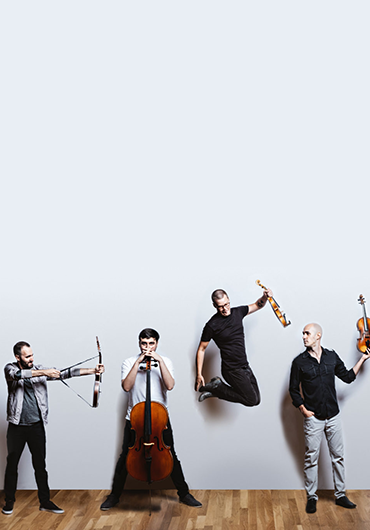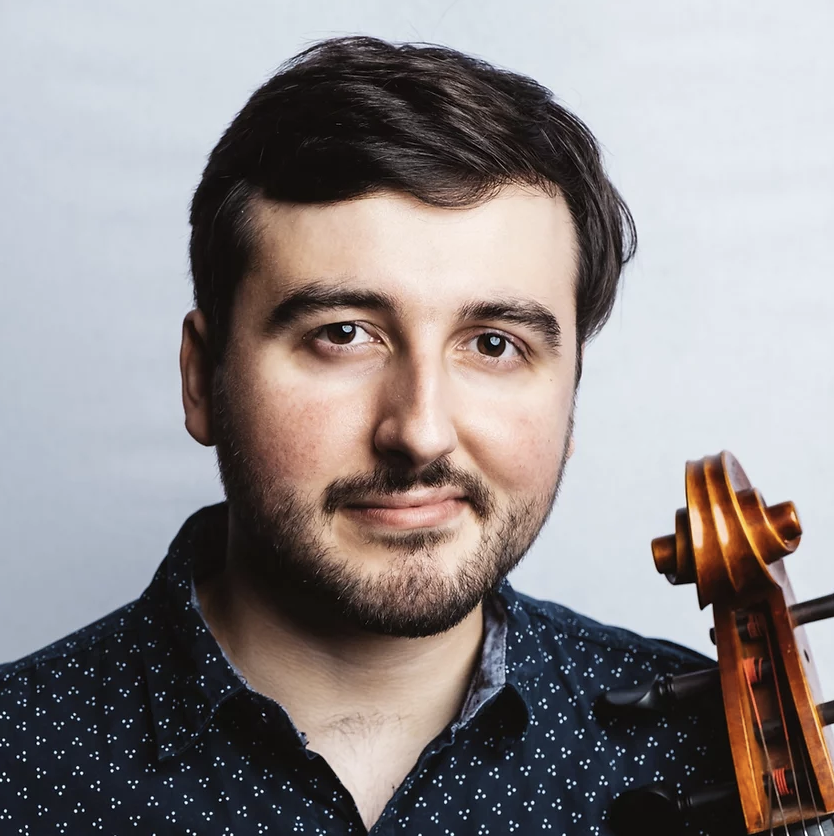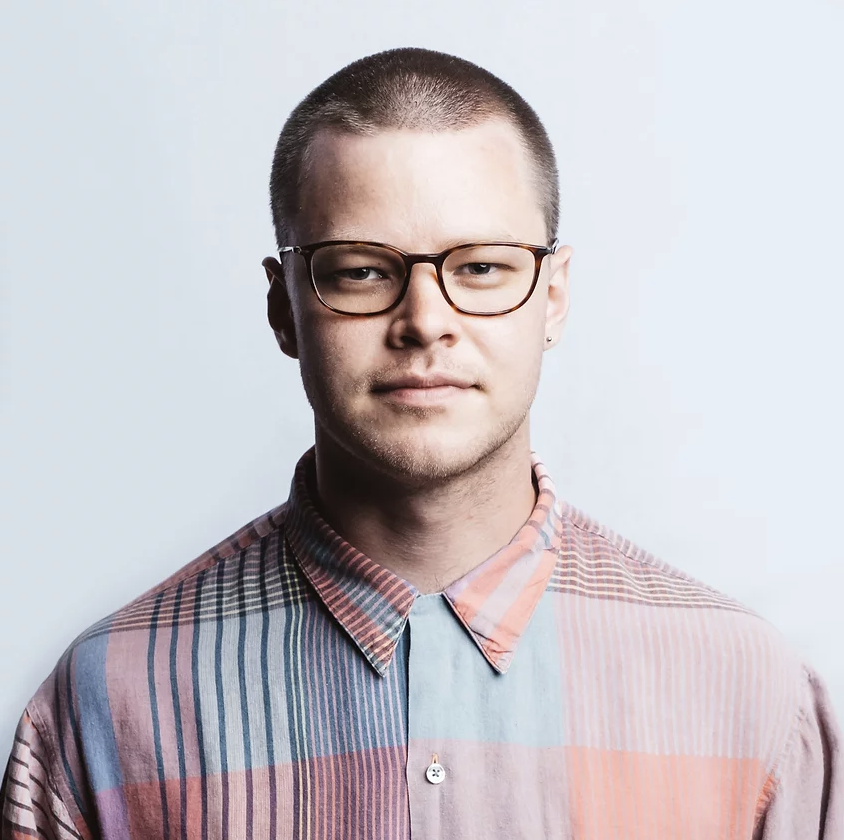Invoke
Concert Information
Invoke
7:30 pm
Thursday, May 4, 2023
$35 Regular | $5 Student
Complimentary Streaming for Ticket Holders
Program
The music of young American composers Jesse Montgomery, Jonathan Bingham and Quinn Mason.
Venue
The Royal Grove
340 W Cornhusker Hwy
Lincoln, NE 68521
Parking
Onsite Parking Lot
Pre-Performance Talk
Genevieve Randall of Nebraska Public Media
More Information

Program
Evolve and Travel
This program highlights Invoke’s original compositions, extended instrumentation, and roots in the classical repertoire. Centered around their own compositions and arrangements, the program also includes: newly commissioned works, modern compositions by young and adventurous composers, and some classics (often with an Invoke twist). The evening length program is anchored by Invoke’s recent work, Project 131, an homage to Beethoven’s beloved String Quartet No. 13 in C# minor. With Project 131, Invoke explores what Beethoven might have written if he had Invoke’s particular skill set, like the mandolin and banjo, at his disposal.
Invoke — Burlywood
Invoke — Alchemy
Invoke — Doorway
Invoke Members
Described by one pretty important radio guy as “not classical…but not not classical” (David Srebnik, SiriusXM Classical Producer), Invoke continues to successfully dodge even the most valiant attempts at genre classification. The multi-instrumental band’s other not-nots encompass traditions from across America, including bluegrass, Appalachian fiddle tunes, jazz, and minimalism. Invoke weaves all of these styles together to create truly individual music, written by and for the group. Equally at home in a collaborative setting, Invoke has performed with musicians from widely varying genres, from the Ensō Quartet, to chamber rock powerhouse San Fermin, to beatboxer/rapper/ spoons virtuoso Christylez Bacon.
Invoke’s two albums Souls in the Mud and Furious Creek both feature original works composed by and for the group, plus the quartet has also performed and recorded numerous world premieres. Invoke believes in championing diverse American voices, including their ongoing commissioning project American Postcards, which asks composers to pick a time and place in American history and tell its story through Invoke’s unique artistry.

Karl Mitze, Viola, Mandolin, Vox
When he isn’t performing and teaching with Invoke, Karl enjoys baseball, board games, and walking his dog Max. A huge baseball fan, he follows the Cincinnati Reds avidly and listens to as many games as possible, usually when running at the park. Karl is also kind of a nerd: he’s a weekend Xbox player, loves fantasy novels, and enjoys anything Dungeons and Dragons related. You can often find him enjoying a beer at a trivia night somewhere in Austin, TX.

Geoff Manyin, Cello, Vox
From the man himself:
"Grinding through intonation rehearsals with invoke is great and all, but I also love life outside the group. An avid videogamer, you'll often find me enjoying a role-playing game, a story-rich one-off, or whatever may strike my fancy that month. I'm also always purveying Austin's best vegan food and drink, be it tacos from Vera Cruz or a butternut squash soup from Sour Duck Market."

Zach Matteson, Violin, Vox
A man of many origins (i.e. Maryland, Siberia, Montana), Zach is proud to call Austin, TX his home base. When he's not making tunes with Invoke, you can find him at a a local coffee shop writing down some haikus, slurping down ramen from Ramen Tatsuya, or adding to his crazy collection of shirts from the local goodwill.

Nick Montopoli, Violin, Banjo, Vox
When he's not banjo pickin' or fiddle scrapin' with Invoke, you might find Nick at the recording studio of composer Graham Reynolds, where he works as Graham's assistant, or pumping iron at the Montopoli Barbell Club. He also loves kicking back with a prime bourbon, relaxing to the soothing tones of power metal, or stalking around the stage of a reunion show as lead singer of the former D.C. hair metal band, Sextacy.